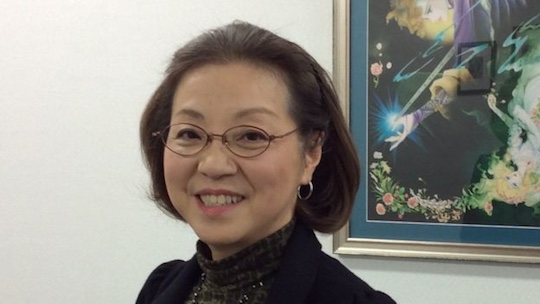The BBC occasionally likes to weigh in on adult Japan matters, not always with success.
It recently profiled Keiko Takemiya, “the godmother of manga sex in Japan”. This time they go the extra mile and get some reasonable background and interviews, but some of their assertions are off — not least the headline.

Takemiya was just 26 when she started Kaze to Kino Uta (The Poem of Wind and Trees).
It opens with two naked teenage boys in a 19th-century French boarding school lying on top of each other, post-coital. The series centres on one of those boys and another new boy. Gilbert, who was abandoned by his parents but raised by his uncle, has experienced rape and incest, and spends his time as a sex toy for the older boys and staff. He then meets Serge, the dark-skinned son of an aristocrat, and the subject of bigotry.
This was in 1976 and the manga proved a taboo-breaking hit when it was published in a shojo manga magazine. It was serialized until 1984.
“In those days everything was opening up. Freedom was in the air… I wanted to explore and write about love without boundaries, love in different kinds of shapes and forms, whether it was between man, woman, child or an old person.”
The manga was a pioneer of shonen-ai (boy-on-boy love) manga and yaoi. (When the BBC headline says “manga sex”, it is falsely assuming that there was no erotic content in manga until Takemiya came along and wrote her Boys’ Love classic.)

However, both the BBC and Takemiya see the genre the manga practically started singlehandedly as taking Japan down the path to “manga pornography”, which has been criticized by such illustrious bodies as the UN and is the constant target of national and Tokyo government attempts to ban it. The US State Department has called Japan “a major producer of sexually exploitative representations of virtual children”.
Ms Takemiya herself admits, she may have opened the door to sexual expression in Japanese manga, and it grew from something virtually non-existent to something the UN now considers could be a threat to the welfare of women and children.
Ironically, perhaps, Takemiya has been one of the most vocal of supporters for manga against efforts to include it in the “child porn” laws.
Putting aside the very large issue of freedom of expression, there is arguably no concrete evidence proving that such manga does tangible harm and, in terms of pure visual explicitness, the depiction of genitalia is anyway prohibited under current obscenity codes.
Whether or not the depiction of “virtual children” in manga is violating an actual human right is the crux of the issue. A lot of the material that draws criticism does not aspire to the literary heights of Ms Takemiya’s work and critics say it exists purely for titillation. Many believe that even if it is fiction, it should be regulated.
“Such things do happen in real life,” as Takemiya says. “Hiding it will not make it go away. And I tried to portray the resilience of these boys, how they managed to survive and regain their lives after experiencing violence.”
